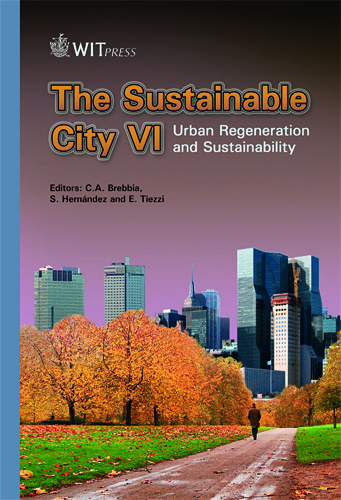Biomimicry And Circular Metabolism For The Cities Of The Future
Price
Free (open access)
Transaction
Volume
129
Pages
12
Page Range
215 - 226
Published
2010
Size
622 kb
Paper DOI
10.2495/SC100191
Copyright
WIT Press
Author(s)
T. Spiegelhalter & R. A. Arch
Abstract
Cities play a crucial role in the fight against climate change. They already account for over half of the world’s population and it is projected that six out of every ten people on earth will be living in cities by 2025. Cities and their residents are also responsible for approximately 80 percent of the GHGs emitted worldwide. All of this is common knowledge, endlessly discussed, widely published, and yet, incredibly, industrial and urban expansion carries on. Historically, societies unable to solve their environmental crisis have either migrated or become extinct. Early societies may have even achieved a better consistency among their resource extraction, transformation, use, life cycle, and flow, a viscosity more in tune with their ecosystems than our own. This research reviews how the natural world has provided ideal models of resource balance that have evolved over millions of years. Native ecosystems are composed of an abundance of life forms that utilize local resources in a way that is synergistically supportive of each other. Therefore, cities themselves must be viewed as complex ecological systems and this attitude must include any approach to designing cities and managing their use of resources. No cities in the world have yet to succeed in fully implementing a complete, integrated, circular metabolism resource plan. However, the two most important emerging cities in Europe are examined in this research. The author presents 2 city case studies, both pertaining to circular metabolism for local municipalities. The way these cities implement resource saving strategies and globally benchmark the life-cycle of their urban systems are examined. The author also discusses how they are biomimicking nature towards becoming carbon-neutral cities of the future. Keywords: sustainability, biomimicry, circular metabolism, low-carboneconomy, urban ecology.
Keywords
sustainability, biomimicry, circular metabolism, low-carboneconomy, urban ecology





